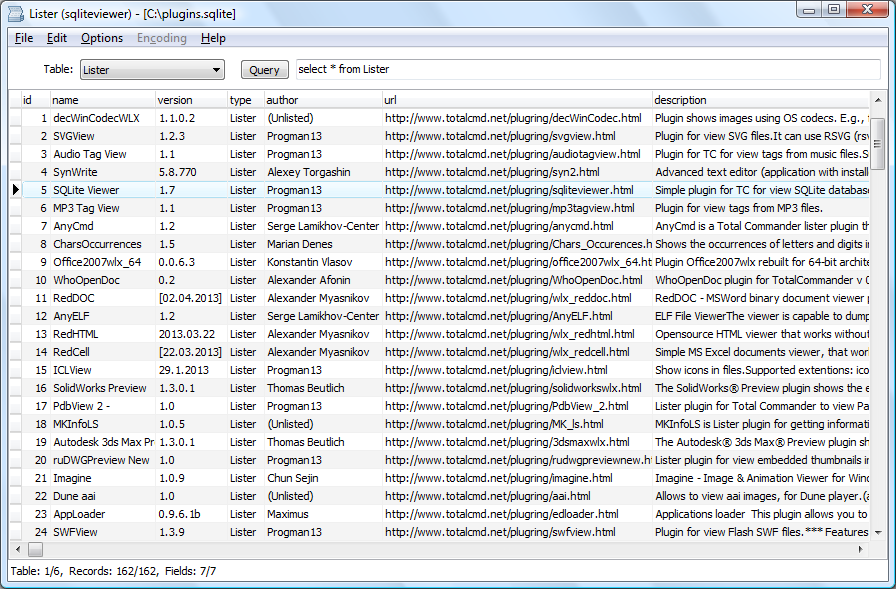
USE DB SQLITE HOW TO
This page is also a great reference to keep handy in case you forget how to do something like change the data type, or import tables. TakeawaysĬongrats! If you made it here, you now have a pretty good idea of how to use SQLite Browser. It’s important to remember to change the data types as soon as you import data into SQLite Browser. If the file database.db already exists, Sqlite will open a connection to it if it does not exist, it will be created. Where ‘database’ is the name of your database. Notice it now only returns 61 rows! And these are the correct rows – with total budgets over $60,000. To create a database, run the command: sqlite3 database.db. Now go back to the Execute SQL tab and try running the query again (just click the triangle again to re-run it). Finally, change the Type dropdown for the total_budget column to integer. In web applications this connection is typically tied to the request. Any queries and operations are performed using the connection, which is closed after the work is finished. You can tell you’ve selected it because it should be highlighted in blue. Connect to the Database The first thing to do when working with a SQLite database (and most other Python database libraries) is to create a connection to it. Go back to the Database Structure tab, and click on the ad_info table. Since SQLite Browser automatically imports all columns in all tables as TEXT, we need to manually change the data type of the non-text columns. Don’t worry, we can fix this! Modify the Column Types in the Tables So it isnt’ recognizing total_budget as a number, and therefore doesn’t know how to find values greater than $60,000. Why? DB Browser imports all columns as text columns by default. We still go the same number of rows in the result (149), and there are still rows that have a total_budget of greater than $60,000. In this tutorial, we have introduced you to the chinook SQLite sample database and showed you how to connect to it using the sqlite3 tool.Hmmmm nothing changed.
USE DB SQLITE CODE
tablesĬustomers invoice_items playlist_track Code language: SQL (Structured Query Language) ( sql ) tables to view all the tables available in the sample database. You should see the following command: sqlite> Code language: Shell Session ( shell ) c:\sqlite>sqlite3 c:\sqlite\db\chinook.db Code language: Shell Session ( shell ) Second, use the following command to connect to the chinook sample database located in the db folder, which is a subfolder of the sqlite folder.
USE DB SQLITE SOFTWARE
If you don’t have zip software installed, you can download a free zip software such as 7-zip.įirst, use the command line program and navigate to the SQLite directory where the sqlite3.exe file is located: c:\sqlite> Code language: Shell Session ( shell ) The sample database file is ZIP format, therefore, you need to extract it to a folder, for example, C:\sqlite\db.
USE DB SQLITE PDF
In case you want to have the database diagram for reference, you can download both black&white and color versions in PDF format.ĭownload SQLite sample database diagram with color How to connect to SQLite sample database You can download the SQLite sample database using the following link. The playlist_track table is used to reflect this relationship. The relationship between the playlists table and tracks table is many-to-many. Each track may belong to multiple playlists.


We provide you with the SQLite sample database named chinook. The chinook sample database is a good database for practicing with SQL, especially SQLite. Introduction to chinook SQLite sample database At the end of the tutorial, we will show you how to connect to the sample database using the sqlite3 tool. Then, we will give you the links to download the sample database and its diagram. Summary: in this tutorial, we first introduce you to an SQLite sample database.


 0 kommentar(er)
0 kommentar(er)
